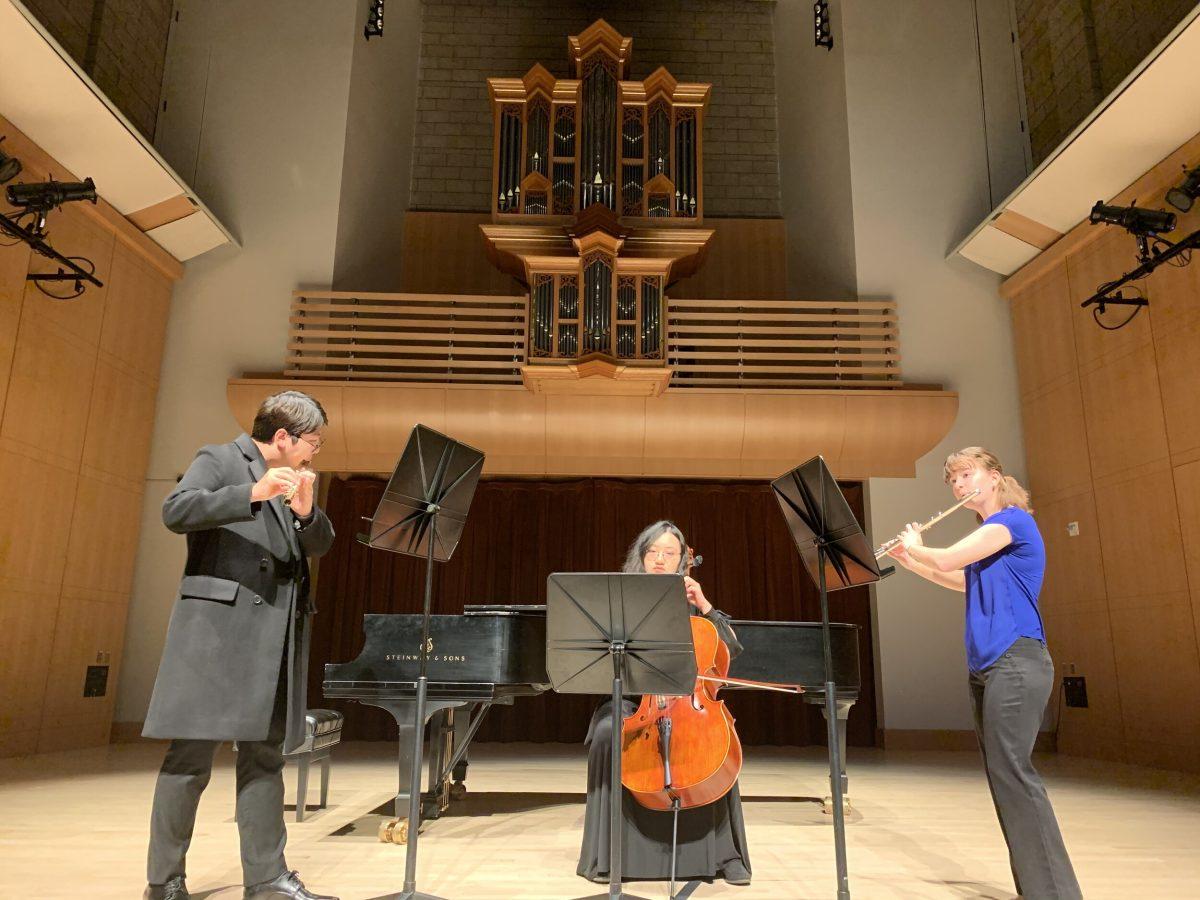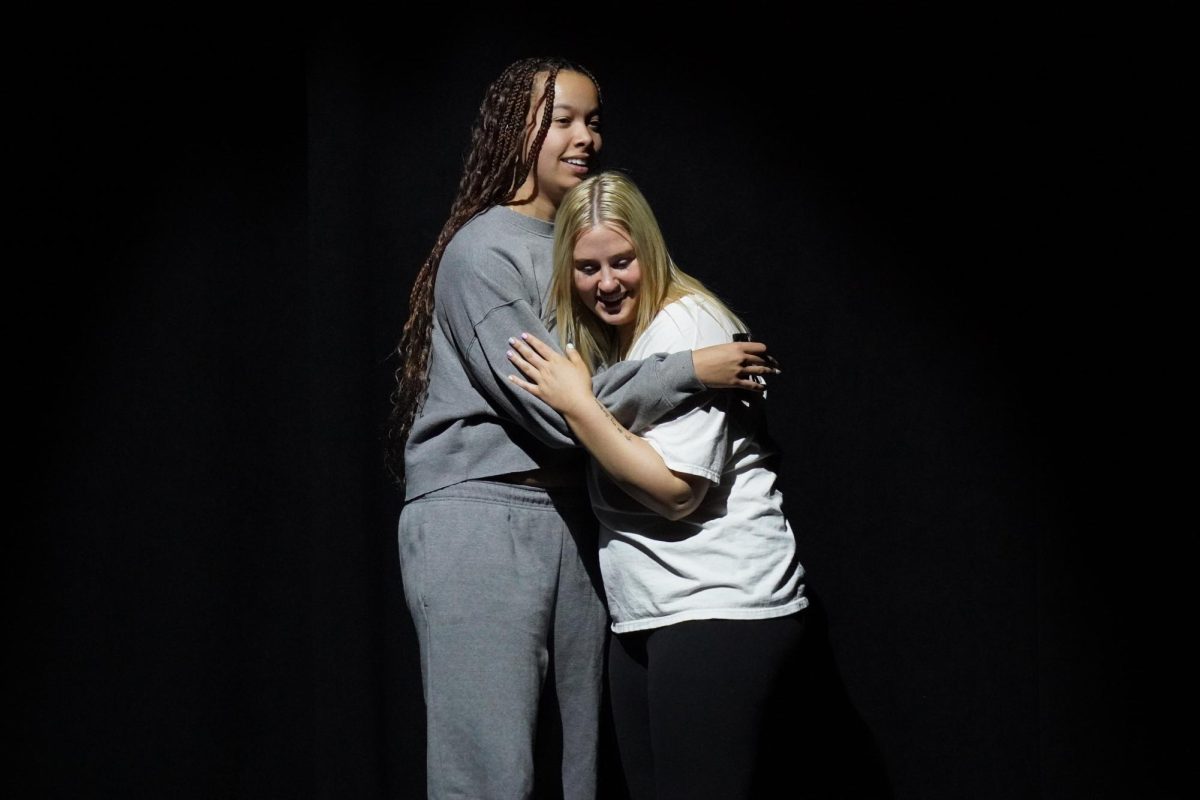Opening with the dimming of lights and a spotlight on the Brombaugh pipe organ located above the stage, Agave Baroque captured the Schroeder Hall audience as Sonoma Bach presented the guest concert “Born Bach” on Friday, Feb. 28 in the Green Music Center; the room, softly immersed in a blanketed silence for “Praeludium and Fugue in E flat,” composed by Johann Christoph Bach.
Composed in 1735, “Praeludium and Fugue in E flat” manifests Johann Christoph’s famous “alto Lament, his wedding ciacona, with a text from the Song of Songs and its virtuoso violin,” explains Sonoma Bach.
Familiarizing with the name of the composition, praeludium translates from Latin to prelude, describing a short piece of music. Fugue is a musical composition in which one or two themes are repeated. Rather than the genre classical music, the composition is known as Baroque music. Baroque music is played on the organ focused on upper and lower tones and layered melodies.
Before Johann Sebastian Bach, Johann Christoph Bach was considered one of the most talented members of the Bach family. “Praeludium and Fugue in E flat” is one of his most significant organ works. Other known musical pieces were only small hymn introductions and few compositions for voices and instruments.
Nearing the end of the music on the organ, Agave Baroque’s instrumentalists entered the stage and performed “Sonata and Capriccio à 4” by Johann Michael Bach, one of the few known compositions created by the artist. He also composed vocal-instrumental sacred music and a few organ pieces.
“Praeludium and Fugue in E flat” and “Sonata and Capriccio à 4” are two pieces by two of the most important Bachs of the generation, before Johann Sebastian Bach: Johann Christoph, the composer that Sebastian called “profound” and his brother Johann Michael Bach, Bach’s cousin’s father-in-law. The generation previous to Sebastian, the middle baroque, was the period of great emotional and contrapunctual death.
The naming of the concert “Born Bach” refers to the generations of the Bach family. Six different Bachs were featured during the program. It began with Johann Christoph, a sonata by Christoph’s brother Johann Michael Bach, and an orchestral suite by a cousin of the same generation as J.S., Johann Bernard Bach; continued with Johann Sebastian Bach, Johann Christoph Friedrich Bach (known for his variant on galant style, popularized by Italian opera) and closed with composer Wilhelm Friedemann Bach.
Sonoma Bach featured Agave Baroque, a group based in the San Francisco Bay Area that specializes in string chamber music of the seventeenth and eighteenth centuries. EMA magazine describes the group as exhibiting “brilliant…profound playing.” Aaron Westman plays the violin; Henry Lebedinsky plays the harpsichord; William Skeen plays the viola da gamba and violoncello; Kevin Cooper plays the guitar and Anna Washburn plays the violin and viola.
“Sonoma Bach brings together and nurtures a community of music-lovers in our beloved Sonoma region to share in the magnificent experience of early music. We know that this music from the distant past – sacred and worldly, vocal and instrumental, solemn and joyful – can speak powerfully to today’s audiences, and we reach out not only to those already familiar with its pleasures and beauties and traditions, but also to those for whom the music is brand-new,” the group said. As Sonoma Bach performs eight concert sets, curious and impassioned students alike can anticipate the next event on Saturday, March 29, which will be located at St. Seraphim Orthodox Church.





![[Both photos courtesy of sonoma.edu]
Ming-Ting Mike Lee stepped in as the new SSU president following Sakakis resignation in July 2022](https://sonomastatestar.com/wp-content/uploads/2024/04/CC4520AB-22A7-41B2-9F6F-2A2D5F76A28C-1200x1200.jpeg)


























